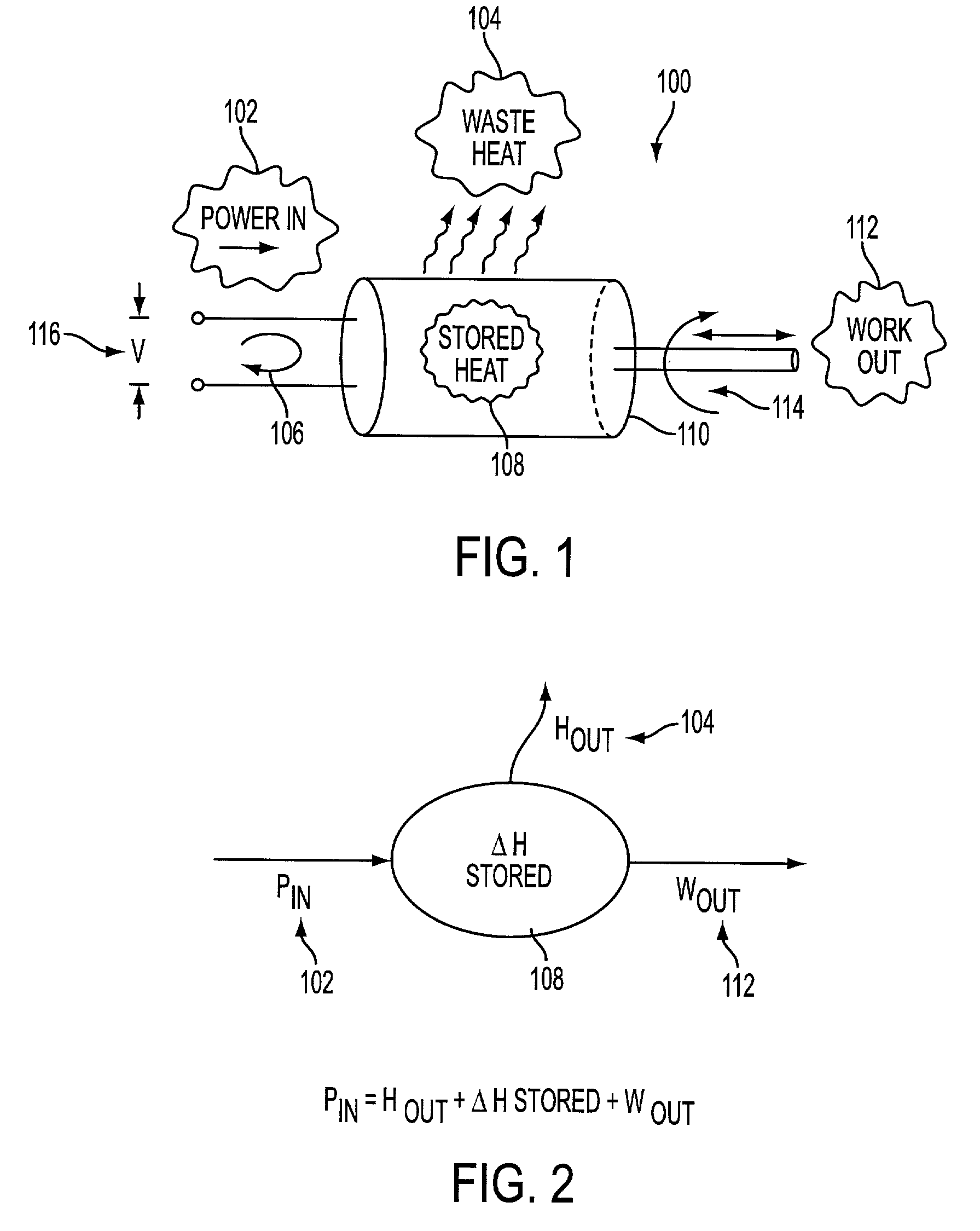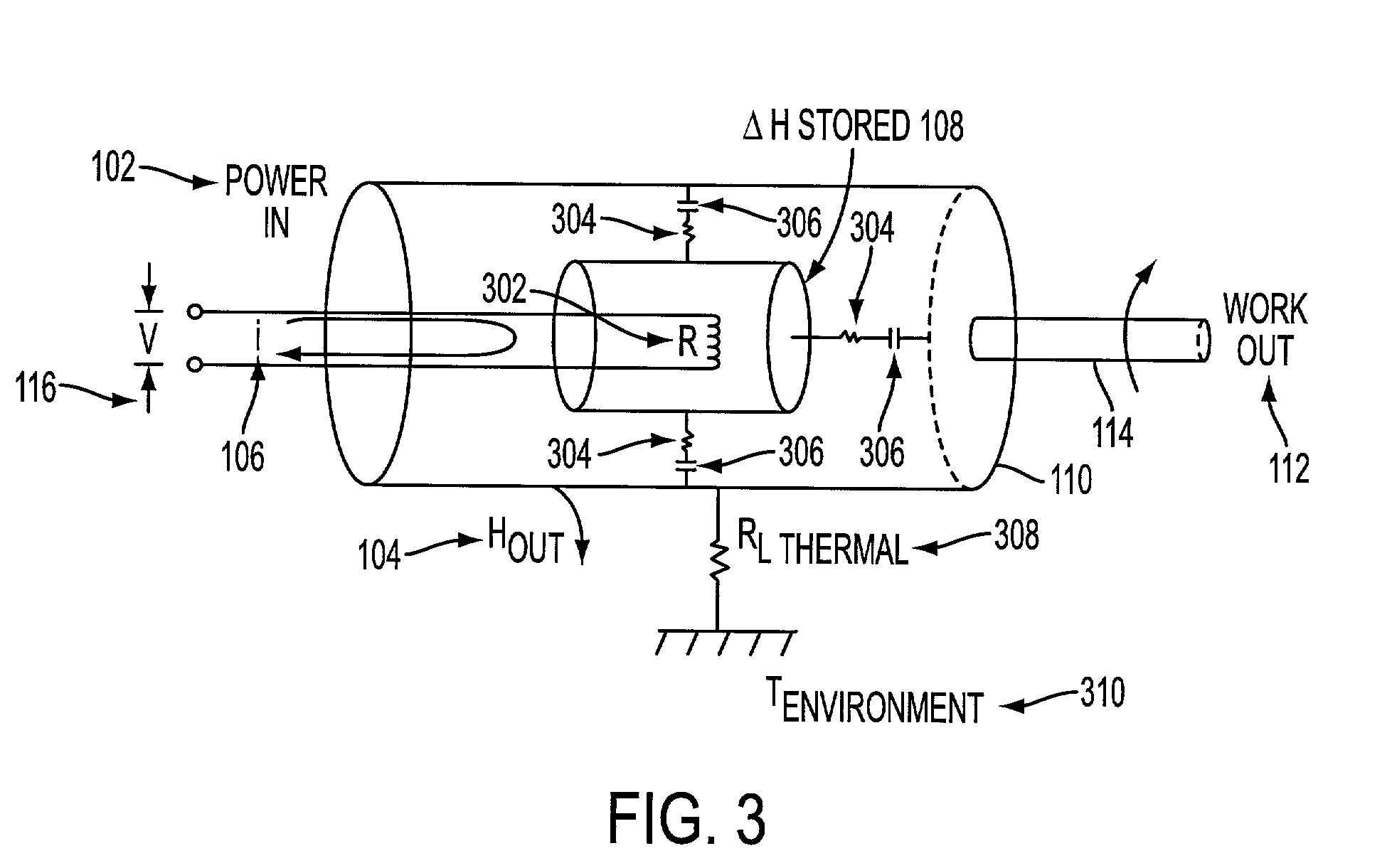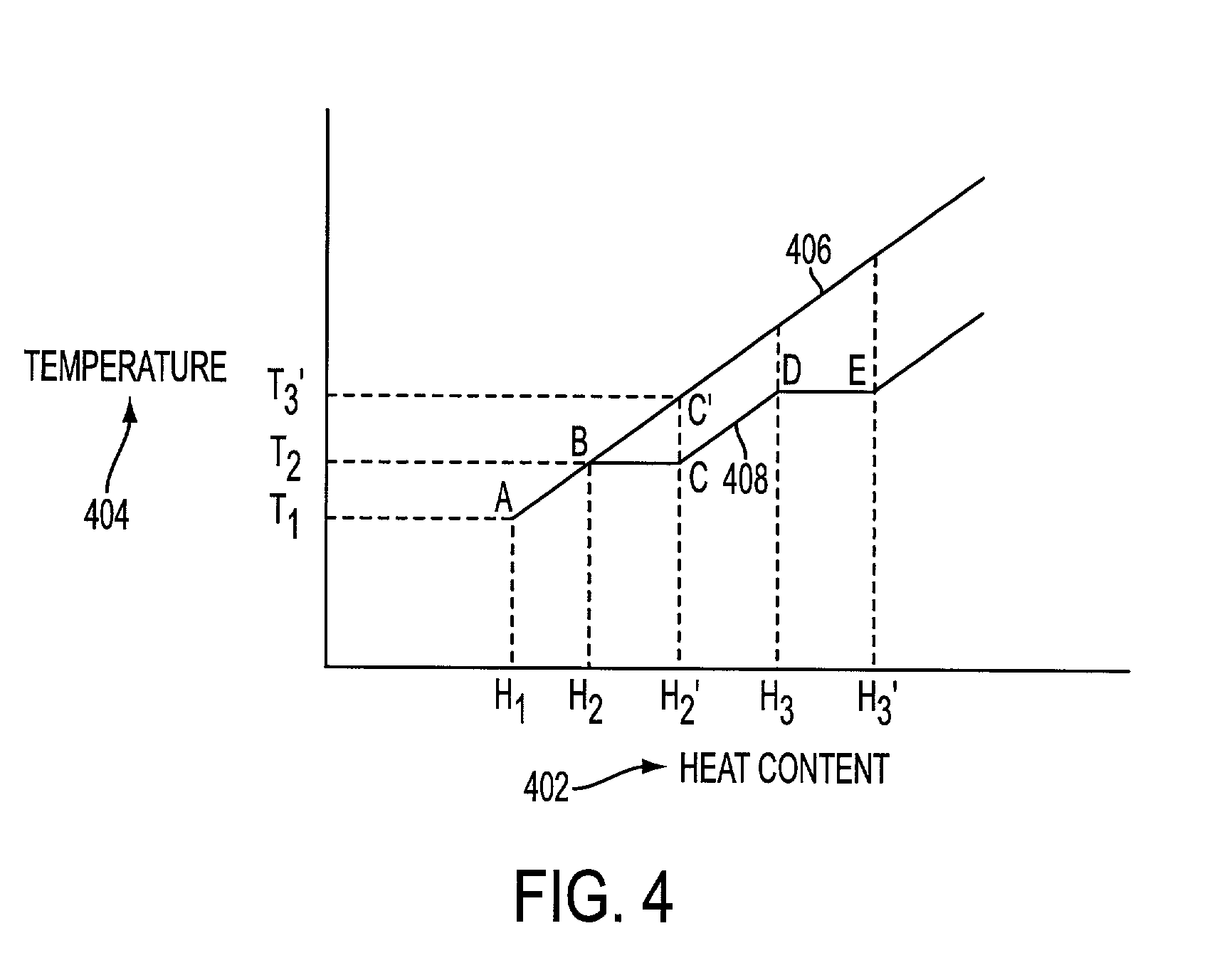Phase change heat sink for use in electrical solenoids and motors
a technology of phase change heat sink and electrical solenoids, which is applied in the direction of positive displacement liquid engines, lighting and heating apparatus, furnaces, etc., can solve the problems of affecting the performance of devices, and generating an increased operating temperatur
- Summary
- Abstract
- Description
- Claims
- Application Information
AI Technical Summary
Benefits of technology
Problems solved by technology
Method used
Image
Examples
Embodiment Construction
[0027] The present invention is better understood in view of the following figures. FIG. 1 illustrates heat flow for an electrical actuator system 100. FIG. 1 includes power input 102, voltage 116, current 106, electrical actuator 110, stored heat 108, waste heat 104, work output 112, and shaft 114.
[0028] When a voltage differential 116 is applied across the input leads, a current 106, having an associated power input 102, is generated. Current 106 flows through a loop, going into and returning from electrical actuator 110. The electrical actuator can be for example a rotary device (for example a motor) or a linear shaft device (for example a solenoid). The power input 102 is converted into three types of energy. The current 106 is used to generate an electromagnetic field inside device 110, that creates work output 112, which is a physical movement of shaft 114. The second type of energy is waste heat 104, which is heat dissipated from the outer regions of device 110 to the environ...
PUM
 Login to View More
Login to View More Abstract
Description
Claims
Application Information
 Login to View More
Login to View More - R&D
- Intellectual Property
- Life Sciences
- Materials
- Tech Scout
- Unparalleled Data Quality
- Higher Quality Content
- 60% Fewer Hallucinations
Browse by: Latest US Patents, China's latest patents, Technical Efficacy Thesaurus, Application Domain, Technology Topic, Popular Technical Reports.
© 2025 PatSnap. All rights reserved.Legal|Privacy policy|Modern Slavery Act Transparency Statement|Sitemap|About US| Contact US: help@patsnap.com



